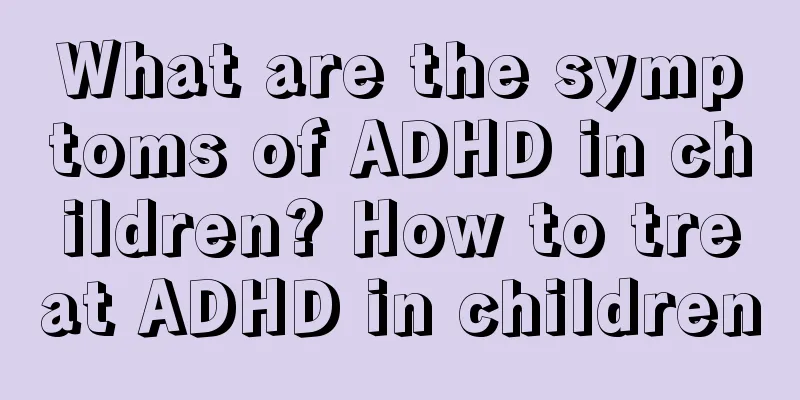How to treat neonatal acne - symptoms

|
When newborns first arrive at this time, there are many things they need to adapt to. Seasonal changes, dietary influences, etc. may cause newborns to have one or another symptom of maladaptation. Neonatal acne is one of them. So how should this be treated? People are unfamiliar with the feeding methods of newborn babies, which can easily lead to some physical diseases in newborns, including the appearance of acne symptoms, which can make newborns feel very painful and often cry frequently. Causes of neonatal acneIn fact, neonatal acne is different from acne on the face of teenagers. Neonatal acne mainly occurs before the baby is born under the influence of maternal male hormones. If the mother produces too much male hormones during pregnancy, it will affect the fetus through the blood circulation of the placenta, which will cause the fetus to have a temporary hypersecretion of the sebaceous glands. Excessive sebum will also block the hair follicles, causing keratinization of the hair follicle epithelium and embolism of the hair follicle ducts. In addition, the effects of fatty acids and bacteria in the hair follicles will cause the baby to have skin inflammation like teenagers. This is neonatal acne. If the baby's skin is inflamed, the mother must take good care of it. In addition to the usual hygiene and cleaning habits, the mother must also pay attention to whether the baby's symptoms are mild or severe. If the baby's symptoms are mild, the mother does not need to be too nervous and will do a good job of nursing. If the symptoms are serious, the mother must treat the baby in time to avoid further infection. For neonatal acne, if the symptoms are mild, generally no treatment is required and it will heal on its own after a few weeks. However, those with severe symptoms should go to the hospital in time for anti-inflammatory and anti-infection treatment. Parents should not act on their own and indiscriminately use corticosteroid drugs, such as Psoriasis Cream and Fuqingsong ointments, because long-term use can cause skin atrophy and form capillary dilation or folliculitis. Be sure to go to the hospital to see a doctor and let the doctor choose the most suitable treatment for your baby. How to treat neonatal acneNeonatal acne mostly occurs in children shortly after birth or under 2 years old. The locations of occurrence are similar to those of young people, also on the forehead, chin, cheeks, etc., and more likely on the back. The skin of newborn babies is usually very fragile and sensitive, so if neonatal acne occurs, many parents will probably be nervous and distressed. So, how to treat neonatal acne? Mama.com Encyclopedia will tell you. In fact, for neonatal acne, those with mild symptoms generally do not require treatment and can heal on their own after a few weeks. Those with severe symptoms should go to the hospital in time for anti-inflammatory and anti-infection treatment. Parents should not act on their own and use corticosteroid drugs indiscriminately, such as Psoriasis Cream and Fuqingsong ointments, because long-term use can cause skin atrophy and form capillary dilation or folliculitis. Be sure to go to the hospital to see a doctor and let the doctor choose the most suitable treatment for your baby. In addition, parents should learn how to care for their children and do the following in their daily lives: 1. Pay attention to the baby's skin hygiene. Wash the baby's face with warm water every day, apply some baby soap, rub gently and rinse, and use a clean and soft dry towel to wipe the water on the face. 2. Prevent squeezing and treat appropriately. Parents should not squeeze or pinch their children's faces when they find acne. Sulfur preparations can be applied externally to promote smooth secretion of sebum. When inflammatory abscesses appear, chloramphenicol acne lotion can be applied to reduce the formation of fatty acid and eliminate inflammation. If the infection is serious, antibiotics should be used reasonably under the guidance of a dermatologist. 3. Mothers should pay attention to dietary balance, eat less candy and sweets, avoid high-fat and spicy foods, and eat more fresh vegetables and fruits. This will help the breast milk to be clean, and the child will benefit from the recovery of the baby after drinking such breast milk. Symptoms of neonatal acne1. Neonatal acne occurs slightly more in male babies than in female babies. The most common site of disease is also the face. The sites of disease are similar to those in young people, mostly on the forehead, chin, cheeks, etc. 2. The characteristics of neonatal acne are mainly red papules, pustules and nodules. The rash is like pimples, with various forms such as whiteheads, blackheads, nodules and pustules. Acne can disappear within a few weeks, papules and pustules can heal within 6 months, and after healing, depressed scars may be left. A few can continue to disappear for more than 1 year, and it is easy to develop during adolescence. 3. The symptoms of neonatal acne can be mild or severe. Mild cases only show minor acne and papules, which can usually be cured with care. Severe neonatal acne rashes often break, leading to infection. Parents should pay attention to whether the symptoms of neonatal acne are mild or severe. If the symptoms are mild, there is no need to be too nervous. If daily care is done, the symptoms will subside on their own. If the baby's face is inflamed, with many red papules, pustules and hard nodules, timely treatment is required to avoid further infection. 4. Neonatal acne can last for a long time, and it will be alleviated in about 3 months and disappear in 6 months, but some babies may be left with pinhead-sized sunken scars. Therefore, parents should pay attention to daily care and keep the baby's face and other parts of the skin clean and tidy. 5. Neonatal acne is similar to eczema in appearance, but the biggest difference is that it does not itch. Another characteristic of the rash is that the ointment used to treat eczema is ineffective. It mainly occurs in male babies. Generally, acne that occurs within three months is in male babies. It can occur in both male and female babies from three months to two years old, but it is more common in male babies than female babies. |
<<: Low appearance may be due to loss of breast milk. Are breastfed babies better looking?
Recommend
Does painless abortion have any impact on women's future pregnancy?
Parents need to make many preparations for the bi...
Is it really useful to go to a beauty salon to get a facial?
Nowadays, many beautiful women like to go to beau...
Pregnancy secrets for women
Women begin to have fertility for decades from th...
Can children drink Huoxiang Zhengqi water? Can babies drink Huoxiang Zhengqi liquid?
Can children drink Huoxiang Zhengqi water? In the...
What are the advantages and disadvantages of air fryers? Does long-term use of air fryers cause cancer?
Many families are worried that fried foods may be...
Is it better for babies to drink cow's milk or goat's milk? How much should they drink every day?
During the growth of babies, they need a lot of n...
Can baby bottles be washed with detergent? Can baby bottles be washed with detergent?
Baby bottles are a must-have for babies. Today, I...
Which brand of electric mosquito repellent liquid is the best? What are the precautions for using electric mosquito repellent liquid?
Electric mosquito repellent liquid is a product t...
Typical symptoms of postpartum depression How long does it take to recover from postpartum depression
Many pregnant women will experience depression af...
What to do with constipation in children and what medicine is effective
Constipation is a common problem for young childr...
Will goat milk powder cause allergies? Will goat milk powder cause internal heat
Goat milk powder is a kind of milk powder with ve...
What are the symptoms before ovulation?
It is easier to get pregnant if you have sex duri...
Can pregnant women eat fish balls? Dietary precautions for pregnant women
Our body is very fragile during pregnancy, and th...
Will sex hurt after giving birth? Will women's sexual desire increase after giving birth?
After giving birth, a woman's body has been t...
How about Abbott's Pure Milk Powder? Is Abbott's Pure Milk Powder suitable for teenagers?
I heard that Abbott's PureZhi milk powder is ...









